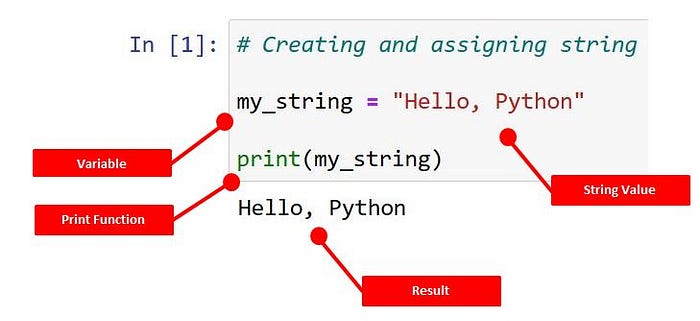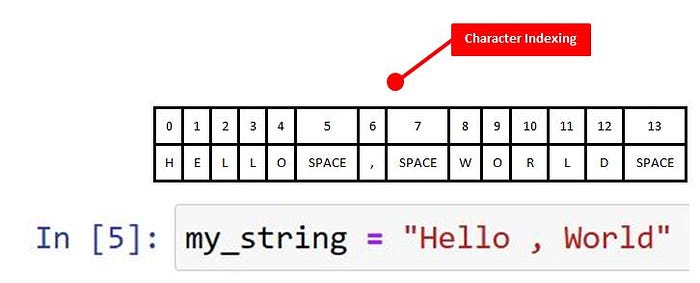In this step by step guide, we will walk you through the strings operations in python and along with that we also covering all the necessary string functions for data manipulations and wrangling purposes. Let’s Dive It !

Introduction
Python provides a rich set of string operations that allows you to manipulate and work with textual data efficiently. In this guide, we will explore various string concatenation, slicing, searching, modifying and more.
Step 1 — Creating and Assigning Strings
If you want to work with strings, you need to create and assign values to the variables. In python, you can assign a string value by enclosing the text within single (‘ ‘) or double (“ ”) quotation marks.

Step 2 — String Concatenation
Concatenation is the process of combining two or more strings into a single string. Python provides the “ + “ operator for concatenation.

Step 3 — String Length

You can determine the length of a string using the built-in “Len()” function. It returns the number of characters present in the string.

Step 4 — String Indexing and Slicing
Python allows you to access individual characters or a substring within a string using indexing and slicing. In python positive Indexing starts from 0 and negative indexing starts from -1, you should easily extract any individual letter from string by providing its indexing value.

Step 5 — String Searching
Python provides several methods for searching within strings. The “find()” method returns the index of the first occurrence of a substring, while the “rfind()” method returns the index of the last occurrence. If the substring is not found, both methods return -1.

Step 6 — Modifying Strings
Strings in python are immutable, meaning they cannot be modified directly. However, you can create new string based on existing once. The “Replace()” method allows you to replace a substring with another substring.

Step 7 — String Case Conversion
Python provides method to convert a strings to different cases. The “lower()” method converts a string into lowercase, while “upper()” function converts it to uppercase.

Step 8 — Splitting and Joining Strings
You can split a string into a list of substrings using the “Split()” method. By specifying a delimeter, you can split the string at each occurrence of the delimeter. Conversely, you can join a list of strings into a single string using the “Join()” method.

Conclusion
Python offers a wide range of string operations that enable you to manipulate and work with textual data effectively. In this step by step article, you will now have a solid foundation for performing various string operations in python. Experiment with these operations and explore the python documentation to further enhance your string manipulation skills.
